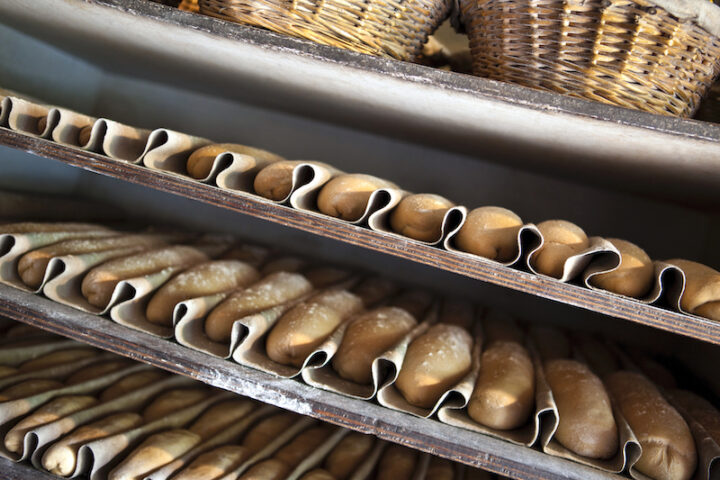When I lived in Turin, I always looked forward to paying a visit to my local panetteria (feminine, plural: panetterie), which is the Italian word for bakery.

In addition to various types of homemade bread (pane), the counter was always piled up with breadsticks (grissini), pastries (pasticcini), slices of focaccia, farinata and pizza, and various sweets. It was hard to resist buying up the entire shop!
Vado in panetteria a comprare dei grissini.
I’m going to the bakery to buy some breadsticks.

As you’ve probably guessed, the word panetteria is a combination of the words pane (bread) and the suffix -eria which is added to nouns to form other nouns to denote a place where something is made, such as an art, craft, or practice. Some other well-known examples that use -eria include gelateria (ice cream parlour) and pizzeria (pizza restaurant).
Two other possible translations for bakery are panificio and forno, with both indicating shops that sell bread and related products or industrial factories where bread is made. Where each term is used tends to vary from region to region, and even city to city.
Hanno aperto un nuovo panificio vicino a casa.
They’ve opened a new bakery near home.
The person who works in a panetteria is called a panettiere or fornaio (baker). To say that you are going to the bakery, you can use either of the following forms:
- Vado in panetteria. = I’m going to the bakery.
- Vado dal panettiere. = literally: I’m going to the baker.
Although both phrases mean exactly the same thing (I’m going to the bakery), the former focuses on the place whereas the latter places importance on the person who works there.

Heather Broster is a graduate with honours in linguistics from the University of Western Ontario. She is an aspiring polyglot, proficient in English and Italian, as well as Japanese, Welsh, and French to varying degrees of fluency. Originally from Toronto, Heather has resided in various countries, notably Italy for a period of six years. Her primary focus lies in the fields of language acquisition, education, and bilingual instruction.


